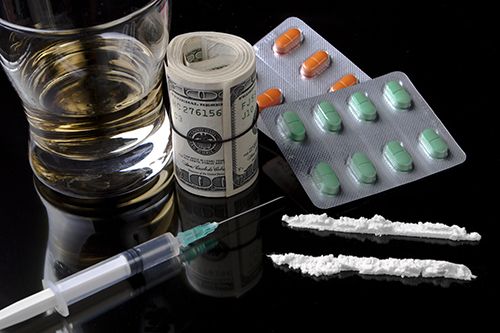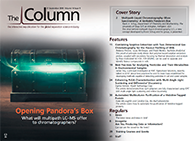Retroactive Toxicology Study on Adolescents Using GC–MS
Toxicological surveillance of illicit prescription and illegal drug abuse has been carried out using post-mortem data from Clark Country, Nevada, USA, with GC–MS, headspace GC–MS, GC×GC–MS, LC–MS, and ELISA.
Photo Credit: David Orcea/Shutterstock.com

Toxicological surveillance of illicit prescription and illegal drug abuse has been carried out using post-mortem data from Clark Country, Nevada, USA, with gas chromatography–mass spectrometry (GC–MS), headspace GC–MS, GC×GC–MS, liquid chromatography (LC)–MS, and enzyme-linked immunosorbent assays (ELISA) (1).
A modern-day pestilence, substance abuse knows no class, race, or age. Carving through demographics outside of the socially expected and at numbers which most infectious diseases would struggle to compete with-even if allowed to spread unabated. National surveys in the US have revealed a doubling of Americans aged 12 and older from 2004 to 2014, an astounding 6.5 million individuals, who use prescription drugs for conditions other than medical use (2,3). Particularly alarming was the rate of drug use in adolescents with an estimated 655,000 adolescents aged 12–17 abusing prescription drugs-around 2.6% of adolescents within the US (2). Studying the effects of such abuse has proven difficult for researchers to fully quantify, a situation further complicated by the rapid brain and body development associated with these phases in life. Drug use during these periods may result in neurological changes and behavioural consequences that differ from those recorded in adult populations (4).
The majority of research on opioid abuse and associated factors among adolescents has been taken from the National Survey on Drug Use and Health (NSDUH), a self-reported survey conducted annually with approximately 20,000 adolescents aged 12–17. There are positives and negatives to self-reported data, however, and additional information would be a welcome addition in trying to understand overarching trends. As such, researchers investigated 526 referred cases through autopsy on subjects aged 12–17 over an 11-year period 2005 to 2015 in Clark Country, Nevada, USA. Comprehensive toxicological examination of heart blood, subclavian blood, urine, liver tissue, stomach contents, and vitreous fluid was carried out using GC–MS, headspace GC–MS, GC×GC–MS, LC–MS, and ELISA.
The retrospective toxicology found that 47% of individuals had positive drug toxicology at the time of death with illegal drugs being found in 35%, prescription drugs in 19%, and over the counter in 7%. Prevalence rates exceeded those in nationally self-reported data (2). The most commonly used drug was tetrahydrocannabinol (THC), which was found in 29.7% of subjects. Excluding THC, illegal prescription opioids and benzodiazepines were used approximately 1.7 times as much as all other illegal-drugs.
Prescription drugs were found in 1 out of 5 adolescents with 39% being positive for one and 61% being positive for poly-prescription drug use. Of the adolescents positive for prescription drugs, 50% were also positive for illegal drugs.
While the study did have limitations, it offered a brief insight into a severe problem blighting American culture, and with drug trends in youths evolving at a rapid speed, more data are required to fully comprehend the situation and more effectively target prevention initiatives. - L.B.
References
- A.B.M. Paul et al., J. Forensic Legal Med.58, 20–24 (2018).
- Substance Abuse and Mental Health Services Administration. Overview of Findings from the 2003 National Survey on Drug Use and Health. Substance Abuse and Mental Health Services Administration (2004).
- S.L. Hedden, Behavioral Health Trends in the United States: Results from the 2014 National Survey on Drug Use and Health 2015 (2015).
- W.M. Compton and N.D. Volkow, Drug Alcohol Depend.83, S4–S7 (2006).

New Method Explored for the Detection of CECs in Crops Irrigated with Contaminated Water
April 30th 2025This new study presents a validated QuEChERS–LC-MS/MS method for detecting eight persistent, mobile, and toxic substances in escarole, tomatoes, and tomato leaves irrigated with contaminated water.

.png&w=3840&q=75)

.png&w=3840&q=75)



.png&w=3840&q=75)



.png&w=3840&q=75)











